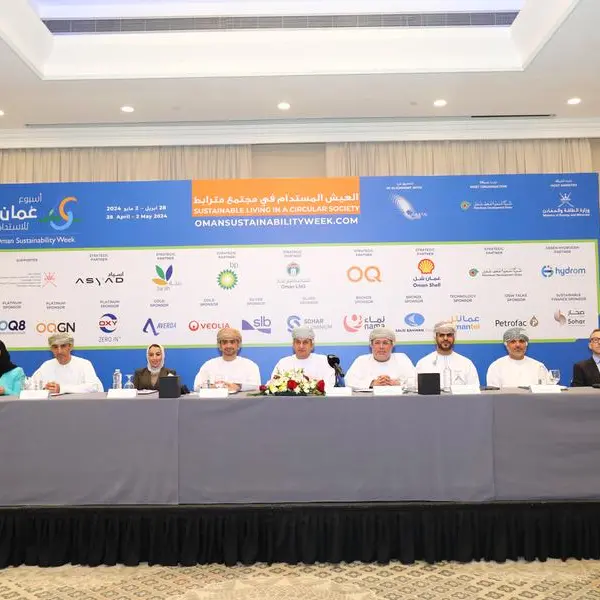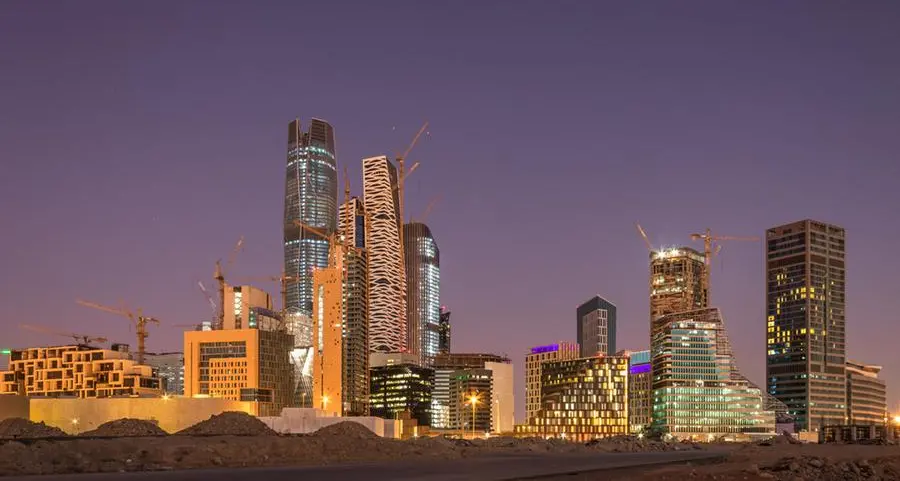Abu Dhabi – United Arab Emirates - Arab economies are expected to grow by 2.3 percent in 2018 and 3.0 percent in 2019
In line with its continuous efforts to support decision-making process in Arab countries, the Arab Monetary Fund (AMF) has released September edition of "Arab Economic Outlook Report" containing updated forecasts of economic growth and inflation rates for Arab countries in 2018 and 2019.
The report indicated that the global economy is expected to grow at a relatively high pace in 2018 and 2019 reflecting the recent rebound in investment activities which reinforce the global aggregate demand and international trade. According to the expectations of some international organizations, the global economy is anticipated to grow by around 3.9 percent in 2018 and 2019, which is considered as the highest level recorded in the aftermath of the latest global financial crisis.
On the one hand, the economic activities in developed economies are expected to witness further improvement due to different factors, at the top of which accommodative monetary policy in some of these countries, and fiscal stimulus in other countries, which will support the aggregate demand levels. On the other hand, the economic activities in developing and emerging market economies are expected to benefit from the improvement in external demand level and the rise in the international oil prices.
The rebound of the global recovery is surrounded by some risks including the escalation of trade tensions, the mounting levels of public and private debt, the possible setback of growth momentum in some developing and emerging market economies, as well as risks that could arise due to the accumulation of financial fragilities in these economies.
The rebound of the global economy enables policymakers to focus more on formulating policies that could help to overcome economic challenges which may affect the ability of some countries to fulfill the Sustainable Development Goals, particularly in some developing countries. These challenges include the need to foster economic diversification efforts, reduce income disparities, enhance human capital, strengthen and ensure governance frameworks needed to increase productivity and competitiveness.
The international oil markets have started to move towards balance since 2017 after a long period of declining prices. The global oil prices have risen by 33 percent during the first nine months of 2018 compared to levels recorded in 2017. This increase is attributed to some factors related to the market fundamentals and geopolitical risks.
Accordingly, International oil prices are expected to stay at relatively higher levels in 2018 considered the improved global demand and the decline in oil commercial and strategic inventories to reach its five-year historical average. Nevertheless, the agreement reached by the OPEC members in June 2018 to increase production and the expected rise in the US oil production would lessen the upward trend in the second half of 2018.
As for economic growth in Arab countries, the Arab Economic Outlook Report showed that the economic activities in the region have improved in 2018 because of the increase in the global demand, the rise in the international oil prices, as well as the positive effects of economic reforms being implemented in a number of these countries. Therefore, the growth rate of the Arab countries as a group has been revised upward to 2.3 percent in 2018, while the growth rate for 2019 is kept unchanged at around 3.0 percent.
On sub-groups level, the growth rate of the GCC has been revised upward to 1.9 percent in 2018. This group of countries will benefit from the increase in oil production in the second half of the year. Also, the rising trend of international oil prices will support the public finance, strength the fiscal space which will support the implementation of economic diversification plans. Moreover, reforms being implemented in the GCC countries to improve the business climate in these countries will support economic activities during the forecast horizon; thus, the economic growth of this group is expected to rise to 2.5 percent next year.
On the contrary, growth expectations for other Arab oil-exporting countries have been lowered to 1.8 percent in 2018 reflecting the internal conditions in some of these countries which led to a notable decline in oil production in 2018 against 2017 levels. Nevertheless, this group of countries is forecasted to grow by around 3.9 percent in 2019 provided that a relative improvement in internal conditions in these countries would be achieved over the concerned period. Growth expectations for the Arab oil-importing countries remain unchanged at 3.9 percent in 2018 and 4.2 percent in 2019 supported by strong external and internal demand as well as the positive impacts of some of the recent economic reforms.
With regard to inflation expectation, the Arab Economic Outlook report noted that the general price level has risen in the first half of 2018 due to price increases of different groups including food and beverages, transportation, housing, electricity, water, gas, health, education, restaurants and hotels in some Arab countries. The inflation levels in 2018 and 2019 are expected to be impacted by different internal and external factors. As for internal factors, the general price level will be affected by the surge in the aggregate demand levels due to the improved economic conditions in some countries and wages increase in some other countries. The continuation of the reform of subsidy systems, the imposition of new taxes, and the rise of some government services fees will also impact inflation rates in many Arab countries. Additionally, some external factors will also lead to increases in the general price level in some Arab countries including the rising international oil prices and the strong dollar in 2018 and 2019.
Consequently, the inflation rate for Arab countries as a group is forecasted at 11.40 percent in 2018. Inflationary pressures are expected to recede in 2019, so inflation is expected to decline to 8.3 percent.
Concerning the sub-group level, inflation in the Arab oil-exporting countries is anticipated to increase to 7.6 percent in 2018 compared with 5.7 percent in 2017, while it is anticipated to reach 6 percent in 2019. Inflation forecasts vary among included countries. Inflation in the GCC countries is expected to reach 3 percent in 2018 and to decrease to 1 percent in 2019, while inflation rate of the other Arab oil-exporting countries is anticipated to reach a higher level to be around 8.1 percent in 2018 and to lessen to 6.2 percent in 2019.
As for Arab oil-importing countries, the general price level is expected to be influenced by the changes in oil and food international prices, pressures on domestic currencies due to the shortage of foreign exchange, as well as measures that have been adopted in some countries to reduce commodity imports. Accordingly, the report expects that the Arab oil-importing countries inflation rate will increase to 14.5 percent in 2018, while it is likely to reach around 10.1 percent in 2019.
© Press Release 2018Disclaimer: The contents of this press release was provided from an external third party provider. This website is not responsible for, and does not control, such external content. This content is provided on an “as is” and “as available” basis and has not been edited in any way. Neither this website nor our affiliates guarantee the accuracy of or endorse the views or opinions expressed in this press release.
The press release is provided for informational purposes only. The content does not provide tax, legal or investment advice or opinion regarding the suitability, value or profitability of any particular security, portfolio or investment strategy. Neither this website nor our affiliates shall be liable for any errors or inaccuracies in the content, or for any actions taken by you in reliance thereon. You expressly agree that your use of the information within this article is at your sole risk.
To the fullest extent permitted by applicable law, this website, its parent company, its subsidiaries, its affiliates and the respective shareholders, directors, officers, employees, agents, advertisers, content providers and licensors will not be liable (jointly or severally) to you for any direct, indirect, consequential, special, incidental, punitive or exemplary damages, including without limitation, lost profits, lost savings and lost revenues, whether in negligence, tort, contract or any other theory of liability, even if the parties have been advised of the possibility or could have foreseen any such damages.










